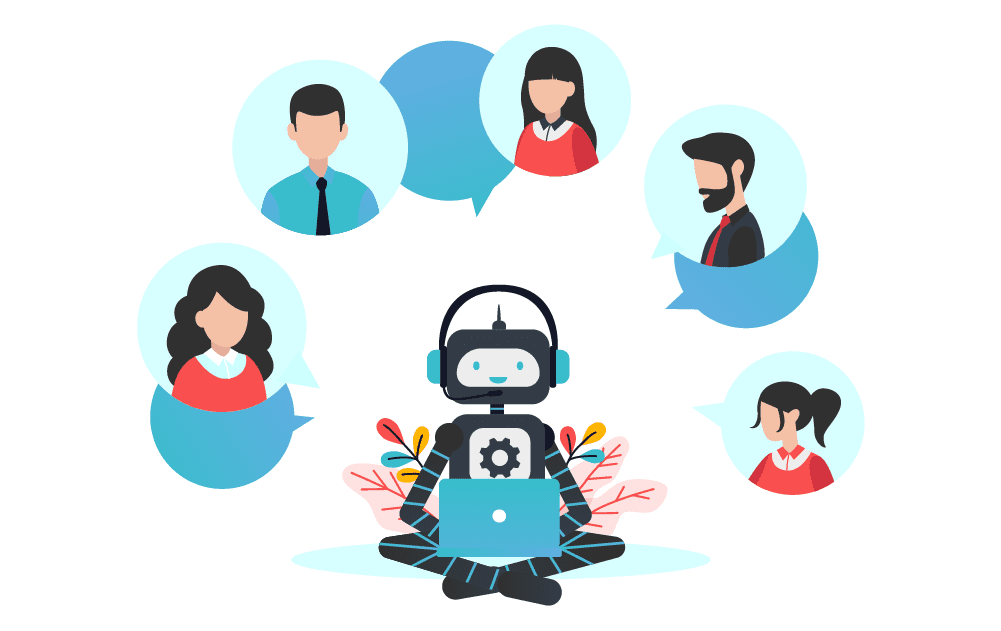Self-service is more than a “nice to have” in today’s customer experience. In fact, 70% of customers expect a company’s website to include self-service. And with the increasing number of virtual agents, automation, and AI tools, customers demand a lot from self-service — mainly speed.
Forrester found brands that are lagging with self-service tools could lose revenue if they don’t catch up. What’s more, 53% of consumers are likely to abandon their online purchase if they can’t quickly find an answer to their question.
But as an SMB, how do you keep up? Trends and technology change fast, making it difficult to anticipate ever-evolving customer demands. But with virtual agents added into your CX, you can offer exceptional self-service and benefit your team simultaneously.
I understand that shifting to new technology can cause some upheaval. But it doesn’t have to ignite utter chaos. Let’s dig into how to up your self-service game by adding virtual agents without adding stress.
Understanding the Basics: What Does a Virtual Agent Do?
Virtual agents are AI-powered bots that communicate and interact with customers. With natural language processing (NLP) and machine learning (ML) technology, this technology mimics human language to interact with customers, answer inquiries, and offer support.
They offer a lot of benefits, including:
- 24/7 availability. Humans are limited. We need sleep, lunch breaks, work-life balance, boundaries. But virtual agents can operate around the clock, ensuring customers have constant access to support.
- Scalability. There’s no need to panic when an influx of customer requests comes in. Virtual agents can handle a large volume of queries at once, scaling up or down to meet evolving demands.
- Consistency. No, robots aren’t going to go rogue like in the movies. Virtual agents deliver the responses you program them to. This ensures you provide consistent messaging to customers and maintain service standards.
- Data-driven insights. Virtual agents offer valuable insights into customer needs and behavior by analyzing interactions. With this information, you can provide continuous improvement within your team.
- Workflow automation. With workflow automation software, virtual agents can automate routine tasks and processes. This frees your human agents to handle more complex needs and devote more time to delivering high-quality experiences.
Want to learn more about adding workflow automation and AI to your contact center? Check out our blog post.
Best Practices for Adding Virtual Agents
AI is disruptive. It’s dramatically changing how we work. McKinsey & Company reports that as AI continues to be developed and implemented, it will likely require reskilling and upskilling to address shifting needs.
That said, adding self-service and AI doesn’t need to cause chaos. With a few of these best practices, you can make the shift without too much mayhem.
Assess Organizational Readiness
You probably shouldn’t just add virtual agents on the fly. Take time to assess whether your organization and team are ready for the technological shift. Then, evaluate your current service capabilities. Note where there are gaps in your service or customer journey and assess agent pain points to identify where virtual agents can make the most impact. Then, craft a strategy with these things in mind.
Optimize Your Customer Experiences
For the most success, your virtual agents should focus on improving your customer experiences. Decide what role they will play in your service strategy. Then, consider some of these tips for using AI to boost your CX.
Create Conversational Scripts
Develop scripts to guide virtual agent interactions and avoid unnecessary customer frustration. These help ensure engaging and contextually appropriate responses.
Add Natural Language Processing (NLP)
NLP helps virtual agents understand and generate human-like responses, enhancing the interaction quality. Implementing NLP can add the human touch to your conversations.
Design Intuitive Interfaces
Self-service is pointless if the materials and resources provided are hard to use or navigate. Ensure your interfaces and chatbots are well-designed and user-friendly to promote a seamless self-service experience.
Establish Fallback Options
Virtual agents should help — not hurt — your customer experience. The reality is that virtual agents will never fully replace human agents. Customers will always have complicated issues, and some will want to talk with a person. And that’s OK! Be sure to prepare for these scenarios. Have fallback options so customers can request to speak to a human agent. A fallback option helps your team maintain service quality at all times.
Training and Testing
Bots need some training, just like human agents. Train your virtual agents using diverse data sets so they are equipped to handle a variety of interactions. Then, regularly test and refine their performance based on real-world customer feedback. They should be monitored and optimized over time for the best results.
Integrate with Your Existing Systems
Virtual agents need the right input to produce the best output. Integrate them into your existing systems and infrastructure to maximize their self-service capabilities and effectiveness. Give them access to your CRM so they can account for customer preferences and history. You can also connect them to your knowledge bases, so they have access to product information.
Choose the Right Solution
Choosing the right solution can make or break your transition to virtual agents. Take time to research solutions so you pick the product that aligns with your specific needs. Discuss with your leadership, service reps, and IT teams to find the software that meets everyone’s wants and needs. Consider factors like ease of integration, scalability, customization options, and support to ensure your vendor is a true partner in the transition.
Want a place to start? Check out Broadvoice’s new solution below.
We recently launched our AI and automation features. Check them out here!
Go.AI: Broadvoice’s Advanced IVA and IVR Tools
With the new Go.AI solution, you can empower your customers to find solutions to their problems while boosting agent productivity. Go.AI has advanced interactive voice assistant (IVA) and interactive voice response (IVR) tools to enhance customer interactions.
Scale resolutions and boost customer satisfaction scores with virtual agents. Lean on virtual agents to automate responses, complete tasks, and trigger actions like sending a message from your IVR without involving a human agent.









